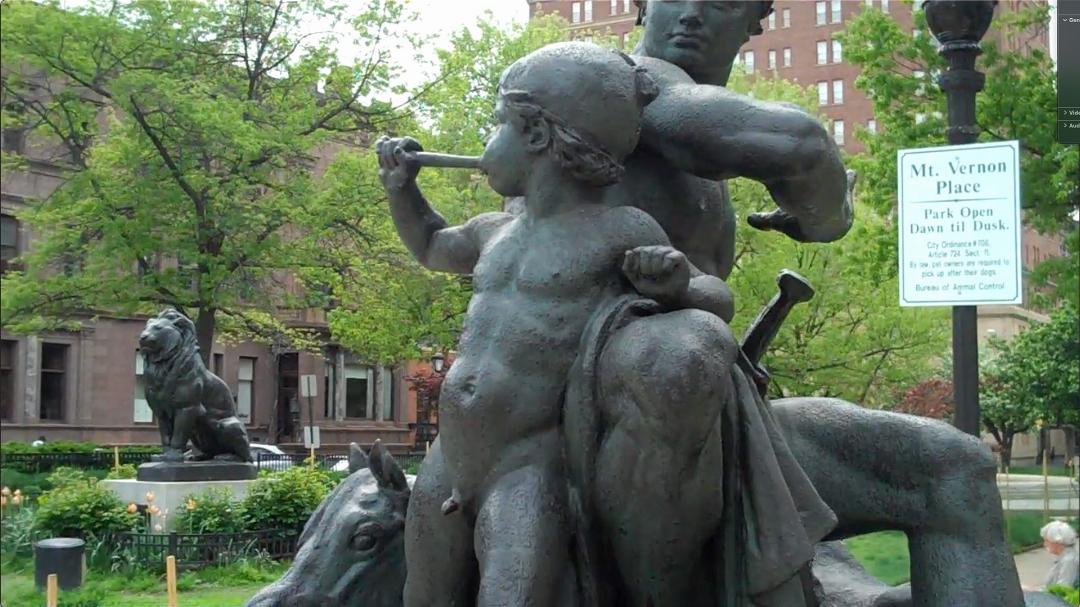
Coinciding with the April 2011 release of the book Outdoor Sculpture in Baltimore: A Historical Guide to Public Art in the Monumental City by Cindy Kelly, the IRC initiated a second early-stage, seed-funded project with the working title Big Public Objects to investigate the potential of public monuments and sculptures to facilitate community development and influence beliefs and attitudes in the way other media can. The book release celebration was held at the Evergreen Museum and attended by Maryland’s most prominent government officials and art luminaries.
John Quincy Adams called Baltimore ‘The Monumental City,’ and Cindy Kelly’s new book has invigorated interest in Baltimore’s public art and monuments. The hope is that this will help the city rediscover what nearly every civilization we admire (for example, Florence, Italy, during the Italian Renaissance) knew well: represent your best wisdom in the most beautiful way possible, everywhere you can. Perhaps this is best said by Segway inventor Dean Kamen: ‘Cultures get what they celebrate.’ Ms. Kelly offered her help and resources to the IRC as Visual Arts Graduate Research Assistants Gianfranco Mirizzi and Steve Yeager began the research project by taking a ‘snapshot’ of how Baltimoreans feel about their public sculptures and monuments. They collected video interviews from across the city and compiled them into a half-hour ethnographic study. It shows that residents have a thin connection to such big public objects unless they understand and value what they stand for, but when they do, the connection can be powerful.
As suggested by these initial findings, the project will move forward to explore the potential for public art that represents ideas people understand and find meaningful, to help establish a sense of place where community building is needed, and to promote pro-social values. Baltimore’s Creative Alliance has been approached and agreed to partner as the project moves forward—offering to use their deep relationships with surrounding communities to locate potential test sites. A Creative Capital grant has been applied for to test the effect of a mobile sculpture, to be built and placed on the UMBC campus, on public discourse at UMBC. The sculpture will be about innovation and the human mind. At this writing, the proposal has successfully moved to the second round.
Researcher and Creators
Creative Director: Lee Boot
Visual Arts, Graduate Research Assistant/Producer: Gianfranco Mirizzi
Visual Arts, Graduate Research Assistant/Producer and Editor: Steve Yeager
Anthropologist: Sarah Chard
Social Psychologist: Anne Brodsky
Media and Communications Studies, Undergraduate Intern: Ela Locke
Information/Web Designer and Media Specialist: Abbey Salvo
Imaging Research Center, UMBC © 2024